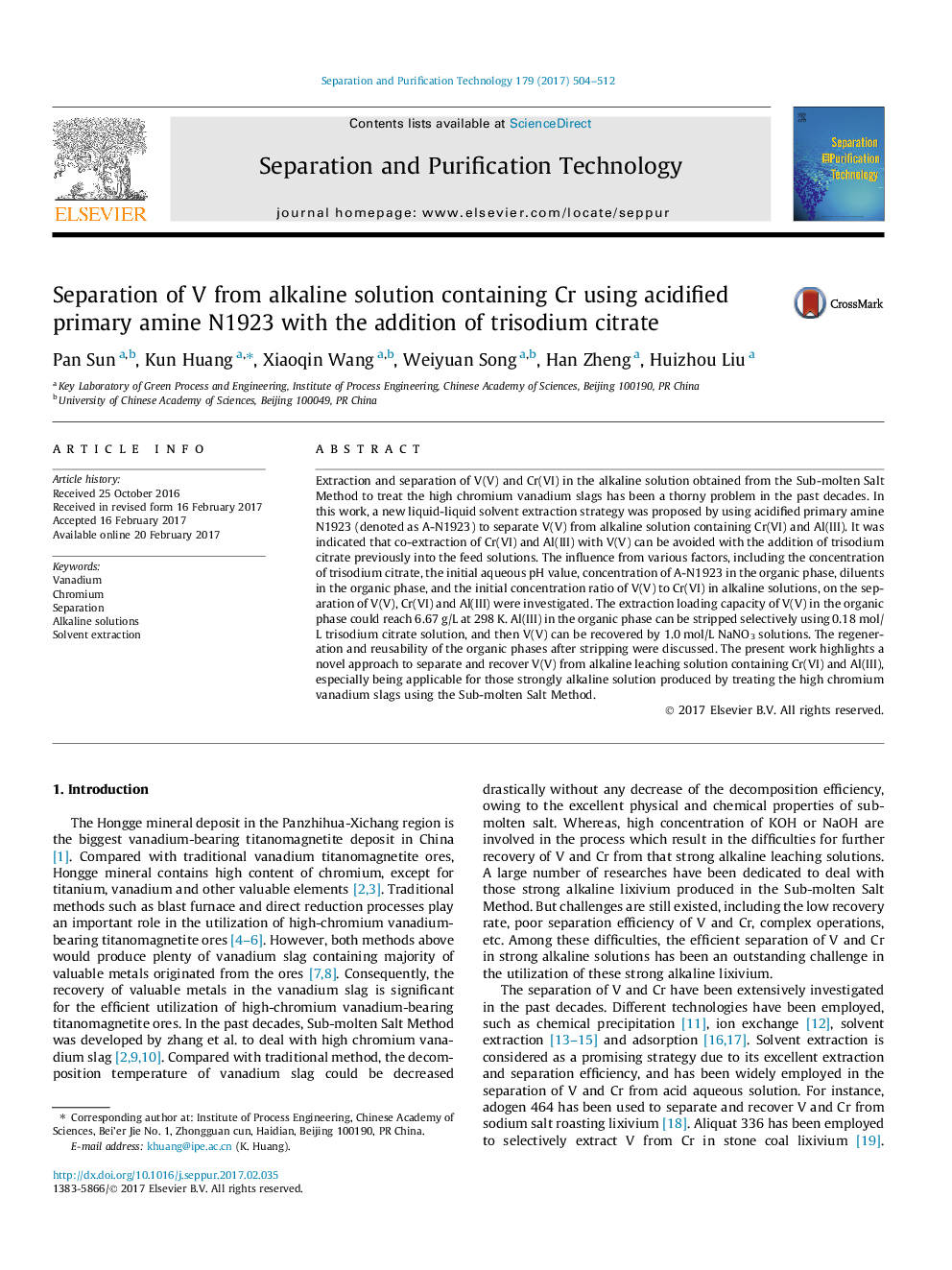| Article ID | Journal | Published Year | Pages | File Type |
|---|---|---|---|---|
| 4990106 | Separation and Purification Technology | 2017 | 9 Pages |
Abstract
Extraction and separation of V(V) and Cr(VI) in the alkaline solution obtained from the Sub-molten Salt Method to treat the high chromium vanadium slags has been a thorny problem in the past decades. In this work, a new liquid-liquid solvent extraction strategy was proposed by using acidified primary amine N1923 (denoted as A-N1923) to separate V(V) from alkaline solution containing Cr(VI) and Al(III). It was indicated that co-extraction of Cr(VI) and Al(III) with V(V) can be avoided with the addition of trisodium citrate previously into the feed solutions. The influence from various factors, including the concentration of trisodium citrate, the initial aqueous pH value, concentration of A-N1923 in the organic phase, diluents in the organic phase, and the initial concentration ratio of V(V) to Cr(VI) in alkaline solutions, on the separation of V(V), Cr(VI) and Al(III) were investigated. The extraction loading capacity of V(V) in the organic phase could reach 6.67 g/L at 298 K. Al(III) in the organic phase can be stripped selectively using 0.18 mol/L trisodium citrate solution, and then V(V) can be recovered by 1.0 mol/L NaNO3 solutions. The regeneration and reusability of the organic phases after stripping were discussed. The present work highlights a novel approach to separate and recover V(V) from alkaline leaching solution containing Cr(VI) and Al(III), especially being applicable for those strongly alkaline solution produced by treating the high chromium vanadium slags using the Sub-molten Salt Method.
Related Topics
Physical Sciences and Engineering
Chemical Engineering
Filtration and Separation
Authors
Pan Sun, Kun Huang, Xiaoqin Wang, Weiyuan Song, Han Zheng, Huizhou Liu,
